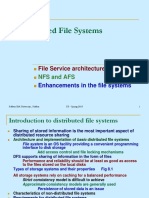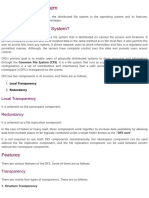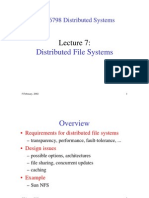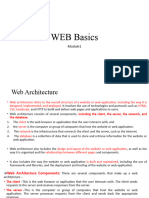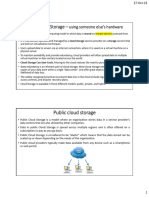0% found this document useful (0 votes)
8 views80 pagesChapter 2 (II) Distributed System
Chapter 2 discusses distributed objects and file systems, detailing the structure and operation of file systems, including file naming, organization, access permissions, and metadata. It introduces Distributed File Systems (DFS), emphasizing their role in promoting file sharing across multiple machines while addressing requirements such as transparency, fault tolerance, and security. The chapter also covers the architecture of the Sun Network File System (NFS), highlighting its stateless protocol and advantages in crash recovery and performance.
Uploaded by
aswat0thamaCopyright
© © All Rights Reserved
We take content rights seriously. If you suspect this is your content, claim it here.
Available Formats
Download as PDF, TXT or read online on Scribd
0% found this document useful (0 votes)
8 views80 pagesChapter 2 (II) Distributed System
Chapter 2 discusses distributed objects and file systems, detailing the structure and operation of file systems, including file naming, organization, access permissions, and metadata. It introduces Distributed File Systems (DFS), emphasizing their role in promoting file sharing across multiple machines while addressing requirements such as transparency, fault tolerance, and security. The chapter also covers the architecture of the Sun Network File System (NFS), highlighting its stateless protocol and advantages in crash recovery and performance.
Uploaded by
aswat0thamaCopyright
© © All Rights Reserved
We take content rights seriously. If you suspect this is your content, claim it here.
Available Formats
Download as PDF, TXT or read online on Scribd
/ 80





















